Holbrook Village
w/e 05 May 2019
All of this week's pictures were
taken with a Kodak DX6490
The village of Holbrook is approximately five miles
north of Derby and just a couple of miles from Belper. As such
it serves as a commuter base for many people who work in the
surrounding area but even though there is much twentieth century
housing it still retains many stone buildings from an earlier
era so familiar in Derbyshire villages. We shall see some of
them here.
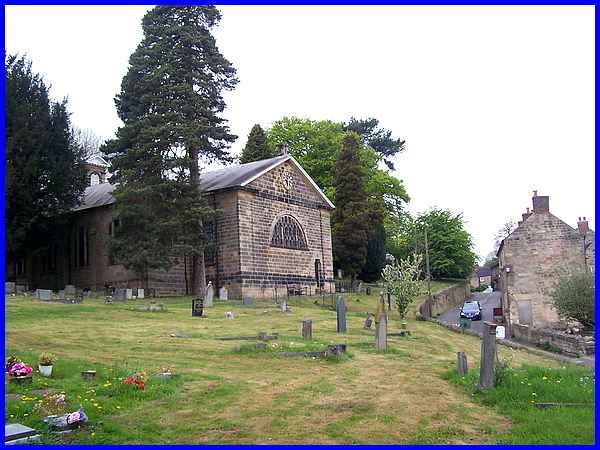
One of the first buildings passed on the approach up the hill
from Coxbench to the south is St Michael's Church. This was originally
built in 1761 as a private chapel for the nearby Holbrook Hall
by Rev. S. Bradshaw but was rebuilt and enlarged in 1841 by the
MP William Evans and is now Grade II Listed. Holbrook Hall is
now a residential care home.
|
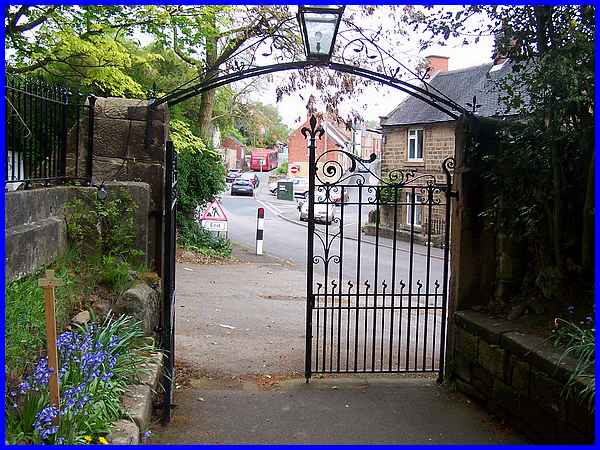
The gates to the church plus the attached wall and War Memorial
to the north are also Grade II Listed structures. The road to
the north splits and forms a one-way system for traffic with
Church Street continuing on the left and Town Street providing
the return route on the right. The cottages in the middle were
once the homes and workplaces of framework knitters.
|
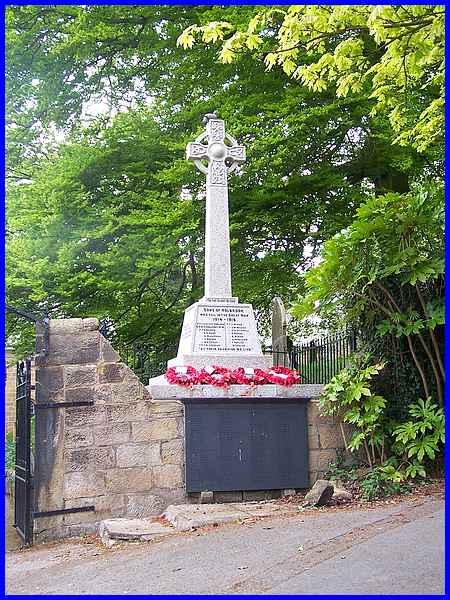
The War Memorial stands to the right of the church gates and
is inscribed "Sons of Holbrook who fell in the Great War
1914 - 1918". It was unveiled on 23rd October, 1921 and
granted listed status on 20th January, 1986.
|
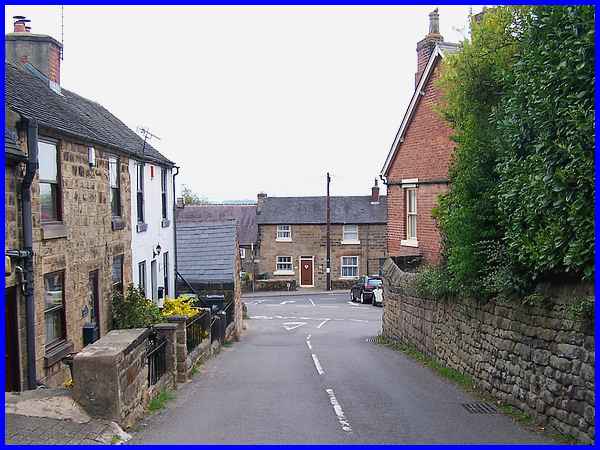
At the northern end of the one-way system Mellors Lane joins
from the west and the cottages here are typical of how the village
would have looked when framework knitting was the major industry
about three hundred years ago. Some stockings made here ended
up in the Royal households in both Spain and England.
(You have to admit the residents of Holbrook today are not
without a sense of humour. The cottage to the left of the camera
position is called "Sea Breeze" cottage and the one
immediately on the left of the image above is "Lifeboat
Cottage!)
|
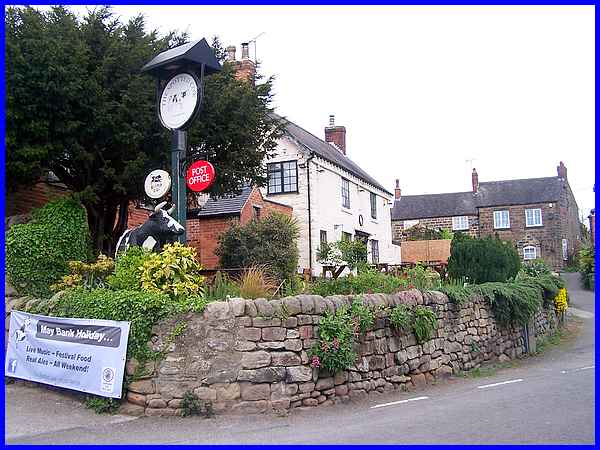
Town Street continues to the north from its junction with Mellors
Lane and this is where we find The Spotted Cow pub. After being
closed for a while it was saved by 225 people in the local community
and re-opened in July 2017. Now run by the Holbrook Community
Society, an adjacent café, The Spotted Calf, is also owned
and run by the community.
|
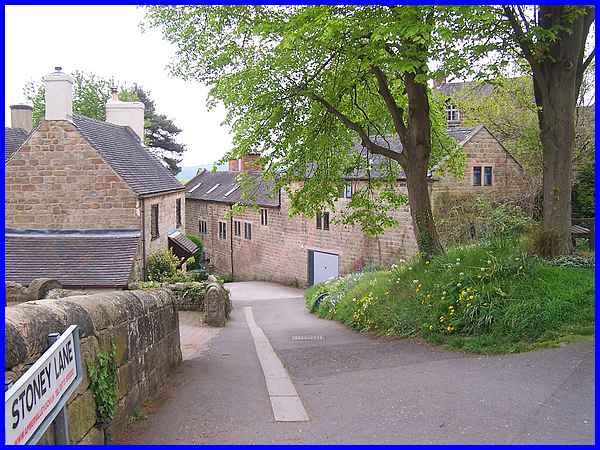
On the other side of Town Street, Stoney Lane leads down the
hill into the valley where Bottle Brook runs alongside the A38
between Derby and Ripley. I can testify to the steepness of the
lane, having climbed it several times on walks that start and
finish in the village during the annual Autumn Footprints Walking
Festival. A seat to the right of the grassy knoll on the right
is certainly a welcome sight after a six or seven mile walk before
the climb!
|
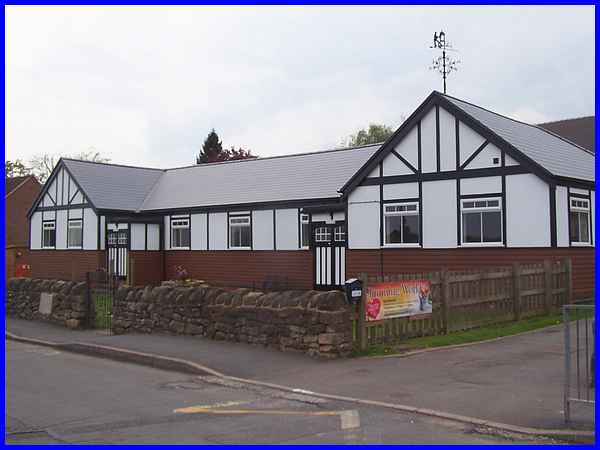
Moving now to the northern end of the village along Moorside
Road we reach an area known as Holbrook Moor and find the Arkwright
Memorial Hall, the base for several groups and clubs in the village.
The hall is named after a Mrs Arkwright who moved into Holbrook
Hall from 1915 and whose husband was a direct descendant of Richard
Arkwright of Cromford. Mrs Arkwright did a lot of charitable
work for the villagers, visited the sick and paying for medical
care and generally offering help where needed. Her help also
provided the village hall in 1932.
|
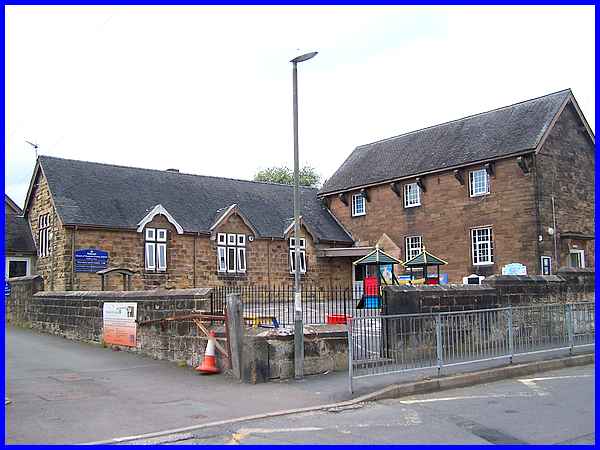
Next to the Village Hall is the Holbrook Church of England Primary
School. More modern buildings at the school stand behind but
the original school was built in 1842 by William Evans of Allestree
Hall. He also owned Holbrook Hall. Prior to that, children were
taught reading and writing in a room over the Holbrook Hall stables
in the 1700s at the behest of Anthony Radford.
|
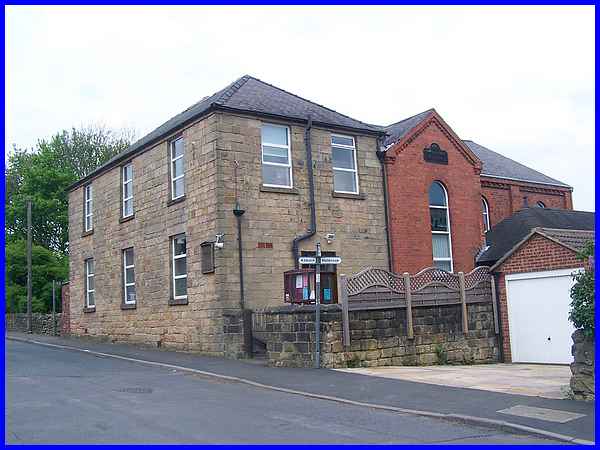
On the other side of Moorside Road and just a little further
on is the Holbrook Moor Methodist Church where the stone panel
in the gable end reads "United Methodist Free Church 1883".
|
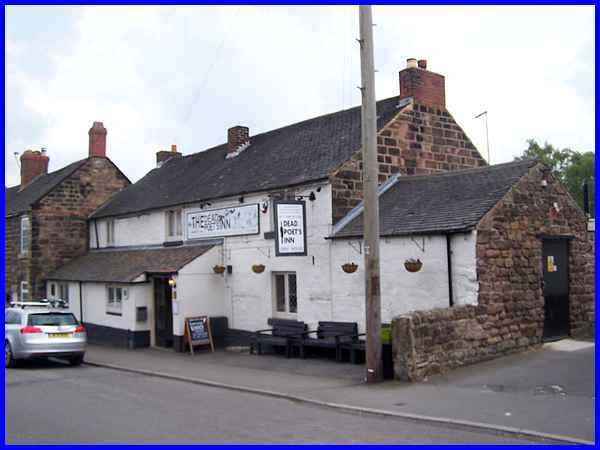
The Methodist Church faces Chapel Street where a little way up
is another pub, The Dead Poet's Inn. Formerly call The Cross
keys, the pub was built in 1800.
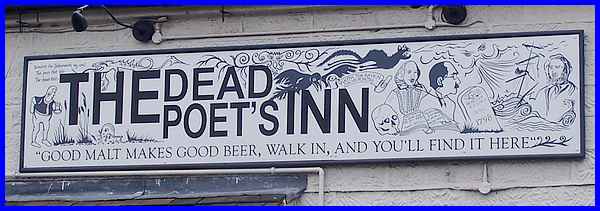
Since the name change, not only has the inn sign been updated
but this panel rhyming "beer" with "here"
in keeping with the poetic theme, has been added to the front
of the pub.
|

